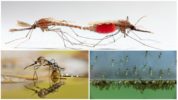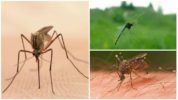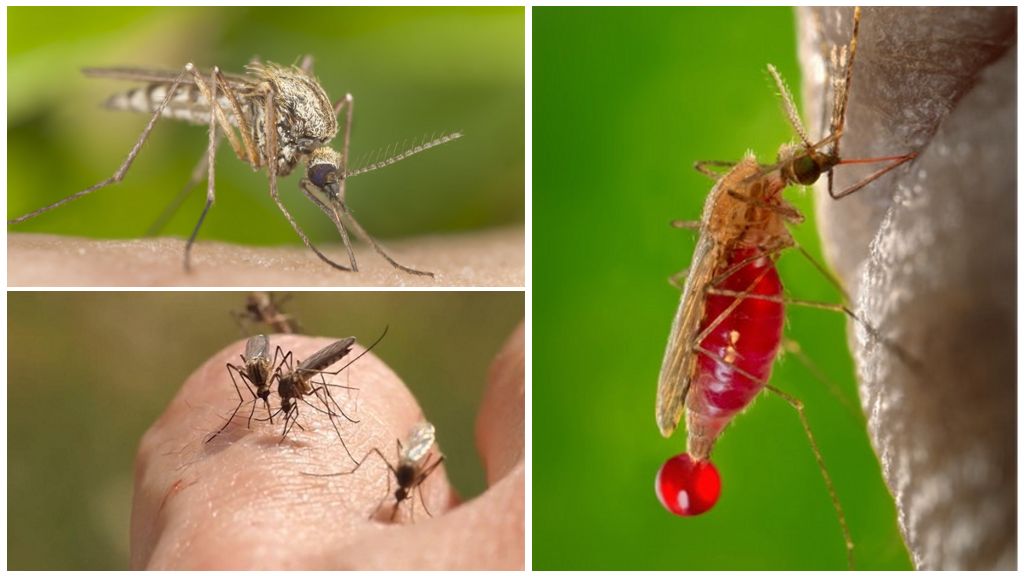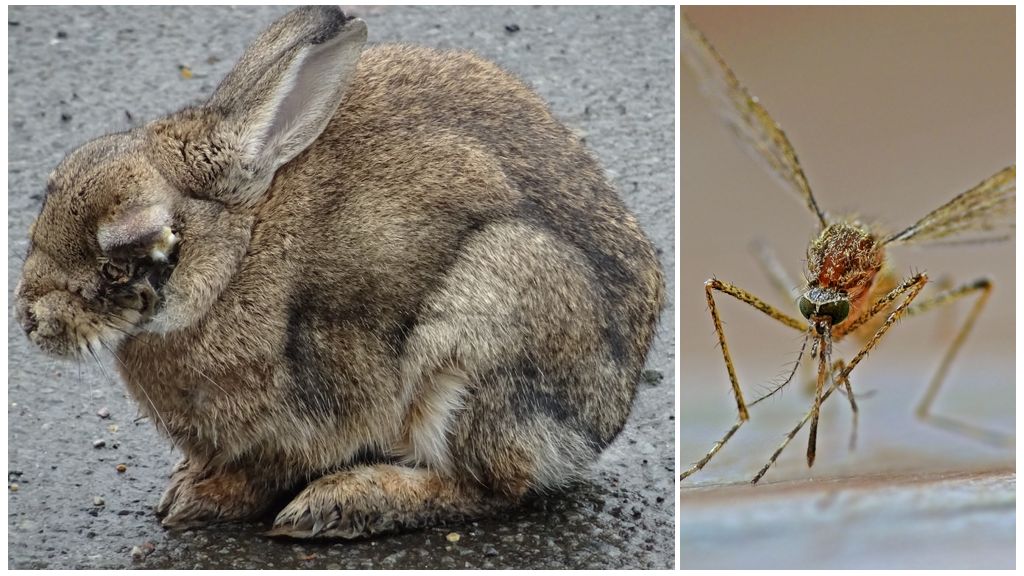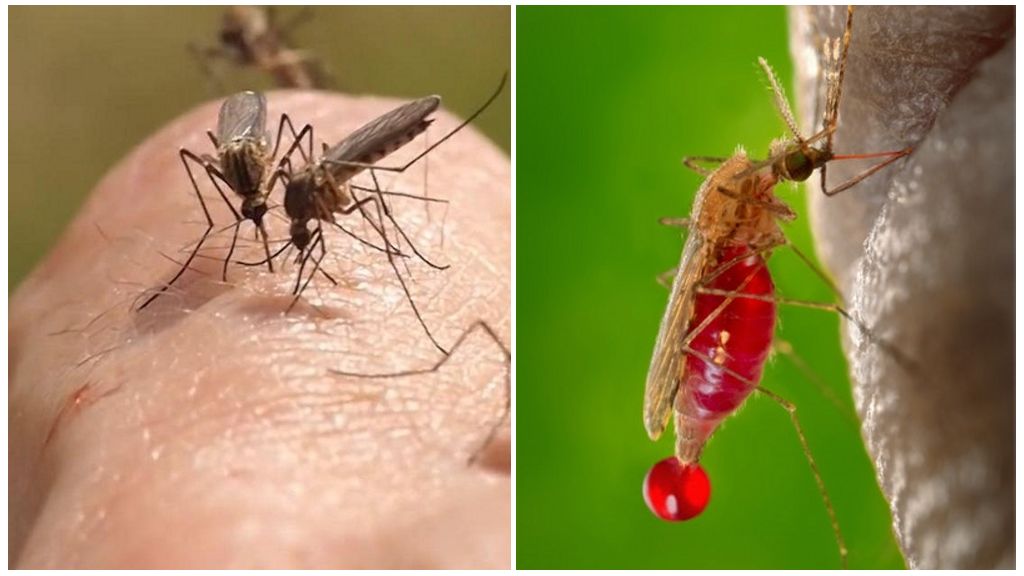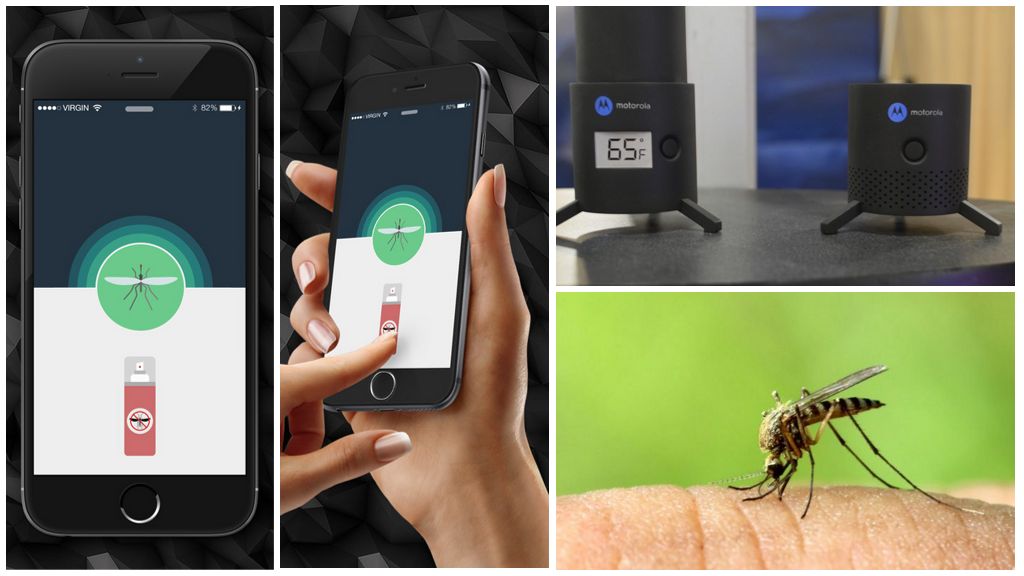- Mosquito lifestyle
- Mosquito
Insect like mosquitoeveryone knows. He announces his approach with a thin, piercing squeak. It lives in the wild, urban areas. Eyewitnesses found them at the height of a 15-story building. How much a mosquito weighs, how it squeaks, and many other facts simply amaze you with its unrealistic data.
Facts about the age of the mosquito population
Insects appeared about 175 million years ago, as evidenced by excavations. Even dinosaurs could suffer from attacks of annoying insects. The ancient representatives of the genus reached a size of only 5 mm. Had a similar body structure with modern specimens, but the oral apparatus was somewhat different.
Interesting!
Scientists have suggested that mosquitoes drink blood relatively recently. Previously treated with plant nectar. In the world there are about 3000 varieties of mosquitoes, about 1000 live in our country.
Habitat Facts
Insects are active at a temperature of +12 degrees Celsius. To extend the genus, you need a humid environment with stagnant water - puddles, a swamp, a lake, a pond, moist soil. Representatives of the population are found all over the world, with the exception of the highlands, the territory covered with eternal ice. Mosquitoes live and breed in forests, near marshes, as well as in the basements of multi-storey buildings.
On a note!
For some time, mosquitoes adapted to urban areas, even able to lay eggs without fertilization.
Breeding Facts
Interesting facts about mosquitoes can not do without this sphere from the life of an insect. The young generation of males appears several hours earlier than females. Fly on the grass near the reservoir where they lived larvaeare waiting for young females. However, after fertilization, a maximum of 10 days live.
After fertilization, the female searches for a victim to drink blood. A person is most suitable for this purpose, but the insect does not disdain wild animals, livestock, pets, rodents, birds.
Interesting!
At one time, the female drinks about 5.5 mg of blood, which is almost 2 times its weight. But how many times can a mosquito bite, depends on the degree of saturation and activity of the victim.
Within 3 days after proper nutrition in the female body, about 500 eggs are formed, which the mosquito lays one at a time or in groups on the surface of the reservoir. Already within an hour it is ready for pairing again; the next portion of eggs is laid after 3 days.
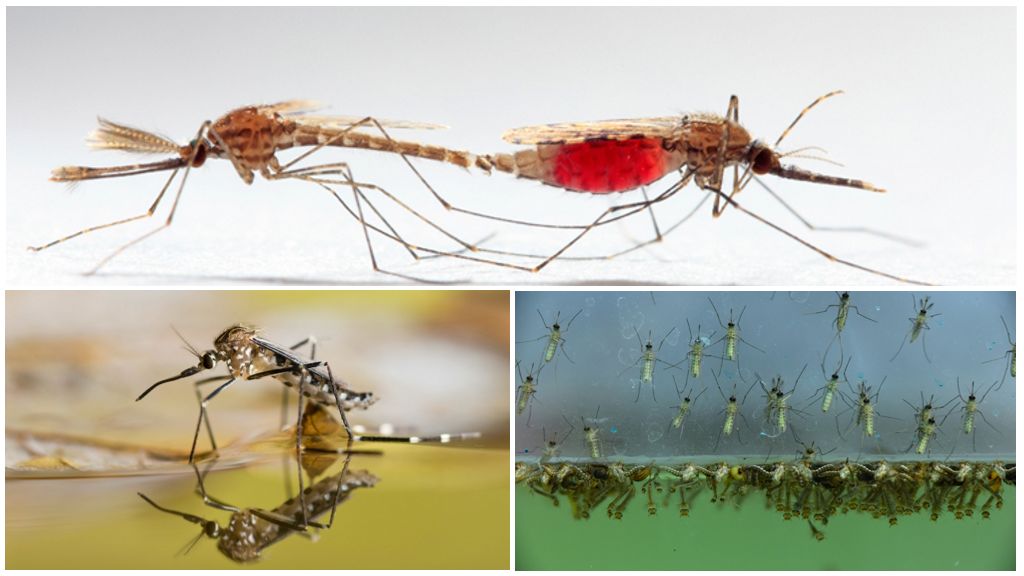
Facts About Appearance Features
The weight of the mosquito is on average 3 g, body length from 4 to 12 mm. Three pairs of long paws have claws and suction cups that help insects stay on any surface. Of particular note is the female's oral apparatus.
A simple proboscis for sucking blood has a rather complicated design. You can consider it only with a strong increase. An oral apparatus is formed from two lips and jaws - upper, lower. On both sides there are stings, in a total of 4 pieces. A mosquito uses them to inflict a bite. Pulls lips, launches 6 needles under the skin. Two of them have up to 50 teethwhich are formed due to dense pointed bristles.
Only after such a difficult process with a bite does a female stick her proboscis, begins to drink blood. At one time he tries to use all the quantity necessary for her.
Facts About Mosquito Squeaking
Everyone knows the mosquito squeak, which sometimes turns into a hum. The male makes the last sound, but the female makes a squeak of a different range. But few people thought why mosquitoes squeak. With the help of ultrasound, the pest is able to warn others about the danger, notify about the presence of a victim, attract a partner for fertilization, or scare him off when unnecessary.
A young female squeals much more intensively to attract a male. When mating occurs, the female does not need attention, publishes scaring sounds. By a certain sound, mosquitoes determine the approach of enemies - dragonflies, bats. Based on this, people created ultrasonic repeller.
Interesting!
Mosquitoes squeak by no means with their mouthparts, but with wings and buzzers. The wings are extremely thin, small, waving at great speed, which when in contact with the air does not create a buzzing sound like many insects, but an annoying thin squeak.

Facts about flying abilities
Special achievements the female can brag of. Female representatives fly far to find a source of food - blood. The speed of the mosquito is 3.2 km per hour. If you really need, insects fly to a maximum distance of 300 km. Provided that before this replenished food supplies. To overcome this distance you need to fly about 35 hours.
Flight range - this is not the most surprising. No exact data what height can insects climb. Many experts insist that mosquitoes do not rise above 15 m above the ground, this is approximately the 3rd floor of the house. However, there are facts that mosquitoes were found on glass from the outside on the 22nd floor.
The mass of the mosquito is only 3 g. With the slightest breath of wind, it changes the route. Streams can carry it over long distances, both up and to the side. Amazing behavior of blood-sucking creatures in the rain.
On a note!
When a drop hits the extremities, the mosquito simply changes its route, to the body - it moves downward along with the drop for some time. If a droplet falls on the body of a mosquito, which is on a solid surface, death occurs. The facts were obtained in the laboratory.
Victim Finding Facts
A hungry female is able to detect a victim from a distance of 30 m. Attract insects natural odors of a person - carbon dioxide during exhalation, sweat, individual microflora. Small children, actively sweating people, as well as owners of the first and second blood groups are subjected to a special attack.
Facts About Bite Activity
Facts about mosquitoes for children - an insect bites about 15 times in one night. An experiment on the territory of the Canadian tundra showed that in a minute young mosquitoes bite for the body, arms, legs, neck about 9000 times. At such a pace, a person runs the risk of losing half his blood in 2 hours.
Mosquitoes sleep all winter, climb into crevices, forest litter. But it is worth bringing into a warm room, as they instantly wake up. Fertilized females fall into hibernation, who immediately lay their eggs with the onset of heat. The active mating season can be seen in April-May. Mosquitoes huddle together, mating takes place on the fly.
Small ordinary mosquitoes are amazing creatures that do not cease to shock people with their abilities.
